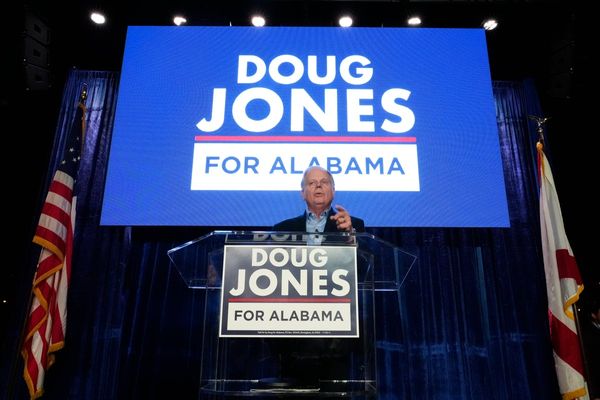This article was first published in The Conversation UK’s World Affairs Briefing email newsletter. Sign up to receive weekly analysis of the latest developments in international relations, direct to your inbox.
Each day that has passed recently has brought another report of mass killings in Gaza. Today’s headline was as grim as any: according to reports from Gaza’s Hamas-run health ministry, another 118 people were killed in the past 24 hours, including 12 people trying to get aid supplies. This is a particularly unpalatable feature of a wretched conflict: the number of people being killed as they queue for food.
A bulletin carried on the United Nations website bore the headline: “GAZA: Starvation or Gunfire – This is Not a Humanitarian Response.” It said that more than 500 Palestinians have been killed and almost 4,000 injured just trying to access or distribute food.
There are, however, hopes of a hiatus in the violence. Donald Trump announced on July 2 that Israel had accepted terms for a 60-day ceasefire and Hamas is reportedly reviewing the conditions. Donald Trump on his TruthSocial platform wrote: “I hope… that Hamas takes this Deal, because it will not get better - IT WILL ONLY GET WORSE.”
Sign up to receive our weekly World Affairs Briefing newsletter from The Conversation UK. Every Thursday we’ll bring you expert analysis of the big stories in international relations.
For his part, the Israeli prime minister, Benjamin Netanyahu, said: “There will be no Hamas [in postwar Gaza]”. This doesn’t bode well for the longevity of any deal, writes Julie M. Norman.
Norman, an expert in international security at UCL who specialises in the Middle East, says we’ve been here before. The ceasefire deal negotiated with great fanfare as the Biden presidency passed over to Trump’s second term in January, fell to bits after phase one of a mooted three-phase deal, with accusations of bad faith on both sides.
Further talk of a new deal in May never got any further than the drawing board. And the two sides’ positions seem to remain utterly irreconcilable. Hamas wants the ceasefire to end in a permanent peace deal and the withdrawal of Israeli forces from Gaza. Israel wants Hamas dismantled, out of Gaza and out of the picture, full stop.
Netanyahu is due to visit Washington next week, for the third time in less than six months. Whether the US president can bring pressure to bear on Netanyahu to compromise remains to be seen.
As Norman points out after the 12-day war against Iran, which both Trump and Netanyahu have been trumpeting as a huge success, the Israeli prime minister may have the political clout to defy his more hardline colleagues in pursuit of a deal. Trump, meanwhile, having done everything he can to help Netanyahu, can call in some big favours in his quest to play dealmaker. Hamas is seriously weakened and its main ally in the region, Iran, seems unlikely to intervene after its recent conflict with Israel and the US.
So while recent history makes a cessation of violence in Gaza seem as far off as ever, there is at least some reason for hope.
Read more: A new Gaza ceasefire deal is on the table – will this time be different?
As noted higher up, one of the more terrible features of this wretched conflict of late has been the number of people being killed as they queue to get food. The death toll at aid distribution centres has mounted steadily since Israel, with US backing, introduced a new system run by an American company: Gaza Humanitarian Foundation (GHF). This organisation replaced more than 400 aid points (previously run by a UN agency) with just four, mainly in the south of the Gaza Strip.
This was always going to cause problems, writes Leonie Fleischmann of City St George’s, University of London, who specialises in the conflict between Israel and Palestine. While Israel says the new system is designed to prevent Hamas taking control of aid supplies, all reports are that the scenes around the four distribution centres are descending into anarchy. According to a UN report, “Thousands [of people] released into chaotic enclosures to fight for limited food supplies … These areas have become sites of repeated massacres in blatant disregard for international humanitarian law.”
“Arguably, this chaos and violence is inbuilt in the new aid delivery system,” writes Fleischmann, who concludes that the new system should be seen as a “a mechanism of forced displacement” which is part of a plan by the Netanyahu government “relocate Palestinians to a ‘sterile zone’ in Gaza’s far south” as it continues to clear the north of the Gaza strip.
Read more: Chaotic new aid system means getting food in Gaza has become a matter of life – and often death
The 12-day war
But if Trump and Netanyahu think the recent short war will lead to a complete reset in the region, leaving a crippled Iran licking its wounds, they way well have miscalculated. That’s the assessment of the situation by Bamo Nouri, a Middle East specialist at City St George’s, University of London. He believes that the 12-day war may prove to have been a strategic blunder by Israel and the US.
For a start, he writes, one outcome of the conflict is that Iran suspended cooperation with the International Atomic Energy Agency (IAEA), ending inspections and giving Tehran the freedom to expand its nuclear programme with no oversight. And its response to Israel’s airstrikes, involving more than 1,000 missiles and drones, breached the country’s “iron dome” defensive system, causing considerable damage and inflicting a serious psychological blow against Israel.
Tehran has also deepened its relationships with both Moscow and Beijing. And far from prompting regime change, the war appears to have prompted an upsurge in nationalist sentiment in Iran.
Nouri concludes: “Israel emerges militarily capable but politically shaken and economically strained. Iran, though damaged, stands more unified, with fewer international constraints on its nuclear ambitions.”
Read more: The US and Israel's attack may have left Iran stronger
It’s hard to get a clear picture of what was achieved, which isn’t surprising when you consider that there remains considerable doubt, even in this information age, what was achieved by the US bombing raid against Iran’s heavily fortified nuclear installations.
First they were “completely obliterated”. Or at least that was what Donald Trump posted on the night of the raid. Then it seemed that they may not have been as obliterated as first thought. In fact an initial assessment prepared by the US Office of Defense Intelligence thought that the damage may only have hindered Iran’s nuclear programme by a few months.
Cue outrage from the US president and his senior colleagues, amplified by their friends in the US media. There followed some new intelligence which seemed to favour Trump’s position. Then the head of the IAEA, Rafael Grossi, weighed in, saying Iran could be enriching uranium again in a “matter of months”. The latest contribution was from the Pentagon which is saying that timescale is actually closer to “one to two years”. Clear as mud then.
But as Rob Dover reminds us, former US defense secretary Donald Rumsfeld once pronounced: “If it was a fact it wouldn’t be called intelligence.” Dover, who is an intelligence specialist at the University of Hull, explains that intelligence almost always has a political dimension and should be viewed through that prism.
“The assessment given to the public may well be different from the one held within the administration,” writes Dover. This is not necessarily a bad thing, he concludes as “security diplomacy is best done behind closed doors”. Or at least it used to be. Now the US president seems happy to discuss sensitive information in public.
Read more: Row over damage to Iran's nuclear programme raises questions about intelligence
The medium is the message
But then, as Sara Polak observes, Donald Trump’s use of social media is changing the way government is conducted in the US. Polak is a specialist in US politics at Leiden University with a particular interest in the way politics and media intersect.
As she writes, for more than a century since Teddy Roosevelt cultivated print journalists, through FDR’s adept use of radio and JFK’s mastery of television, each new media platform has its master. For Trump it is social media. And he is using it to remake politics.
Read more: How Trump plays with new media says a lot about him – as it did with FDR, Kennedy and Obama
Nowhere has Trump’s mastery of art of issuing simple messages which make for effective soundbites been displayed so clearly than in the name of his landmark tax-cutting legislation still being wrangled over in the US Congress at the time of writing: the One Big Beautiful Bill Act.
While undoubtedly big – it runs to 940 pages – its beauty is what the US House of Representatives has been debating fiercely for 24 hours or more, after it passed the Senate with the help of a casting vote from US president J.D. Vance when three Republican senators voted against it.
Dafydd Townley from the University of Portsmouth, who writes regularly for The Conversation about US politics, has written this incisive analysis of the politics around the legislation which appears set to continue for some time to come.
Read more: Trump wins again as 'big beautiful bill' passes the Senate. What are the lessons for the Democrats?
World Affairs Briefing from The Conversation UK is available as a weekly email newsletter. Click here to get updates directly in your inbox.
This article was originally published on The Conversation. Read the original article.







